TechRadar Verdict
These are probably among the best headphones ever made by mankind but you're going to need some stellar ears and a bank account to match.
Pros
- +
Flawless sound
- +
Easy to drive from phones
- +
Very comfortable
- +
Light and balanced
- +
Amazing build quality
Cons
- -
Expensive!
- -
They're not that pretty
- -
Limited isolation
Why you can trust TechRadar
There's really no other way of saying it: these headphones cost £1,099. Yes, one thousand and ninety nine British pounds.
It's a truly staggering amount of money, enough to buy you 92 pairs of Apple EarPods; 33 iPod shuffles; Or, the metaphysical concept of shame.
But suspend your disbelief for just a few minutes and come with me on a journey through the PM-1's credentials and maybe, just maybe, you'll get to the end of this review in the belief that they're worth the cash.
Oppo, of course, is better known for its kick-ass Blu-ray players and more recently its Android smartphones than high-end ultra-headphones. But actually, it's not the only reference-grade headphone manufacturer operating out of China - HiFiMAN is also largely based there.
The PM-1 headphones are the first such products Oppo has made, and the result of many years of research, development and testing by a team of chemical and materials scientists, acoustic engineers and a flock of wild audiophiles captured in the jungles of Madagascar.
They're launching in the UK and Europe at the end of April, and will be joined in May by the slightly cheaper £699 Oppo PM-2 and the Oppo HA-1 headphone amp - price to be confirmed.
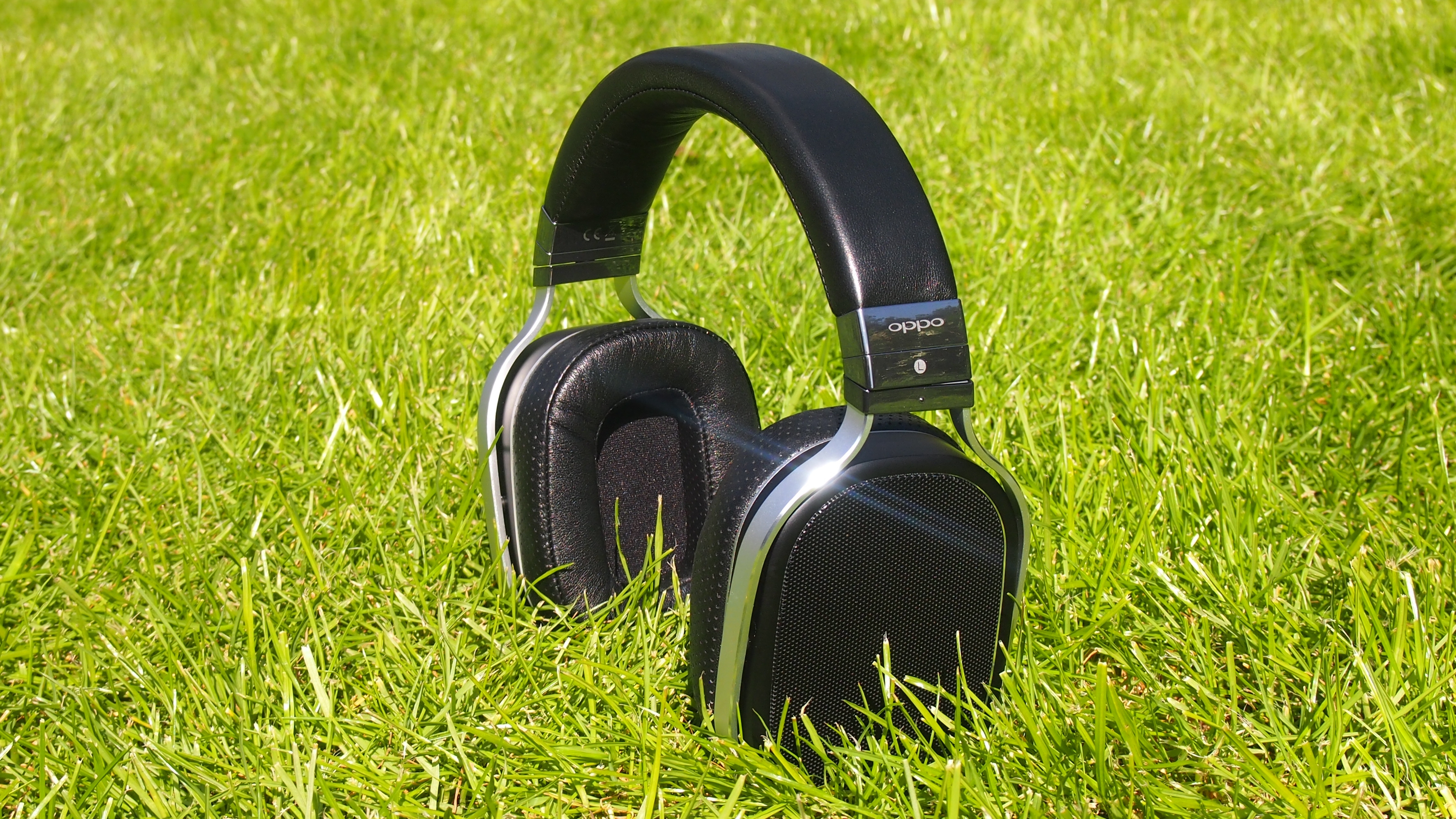
Planar magnetic explained
These are not the first headphones to carry an extraordinary price tag. But what makes the Oppos stand out is the expensive technology inside them. The PM-1 use a new implementation of planar magnetic driver technology - an alternative method of driving headphones and speakers where the norm is to use dynamic "moving coil" drivers.
Sign up for breaking news, reviews, opinion, top tech deals, and more.
The dynamic drivers you find in the vast majority of headphones use a magnet inside each earcup to move a coil of wire that's attached to a circular diaphragm. The rapid to-ing and fro-ing inside the magnetic field that ensues when you pass an electric current through the coil is what creates the sound waves we then experience as music, movie soundtracks and BBC Radio 4 documentaries about the history of oven gloves.
The problem with this technology is that the diaphragms do not move uniformly across their surface, and that's largely due to the coil of wire only coming into contact with certain parts of it.
Instead, they move and warp by tiny amounts in uncontrollable ways across their span. This causes minute distortion, and so when you attempt to create a sound frequency of, say exactly 90Hz, you'll find that the driver might also be producing frequencies of 89.6, 89.7. 89.8 and 89.9Hz as well as 90.1, 90.2 and so on.
This is one of the chief causes of the slight muffling you get to varying degrees with different headphones, depending on a range of design factors.
Of course, many headphones are better or worse than others in this respect, but Oppo thinks the dynamic technology itself is the main flaw, which is where other, far more expensive technologies can be deployed to attempt a better job.
Possibly the best known alternative driver tech is known as electrostatic, which uses magnets on both sides of the diaphragm to create a more uniform magnetic field. The downside to this method is that you usually need some form of amplification in order to make them work, making it a no-no for out-and-about listening.
And this is where planar magnetic drivers come into their own - they're a bit of a cross between the dynamic and electrostatic ideologies.
The planar magnetic drivers in the Oppo PM-1 consist of a super-thin, seven-layer diaphragm which has a spiralling pattern of flat conductors etched into it on both sides. These conductors carry the electrical signal from your music source, and are suspended between precise magnets both in front and behind.
Because there are twice as many conductors in a more dexterous magnetic field, you get higher sensitivity, better damping and more drive force.
This all allows the driver to move at any point across its surface instead of just in certain spots, enabling it to create very specific sound frequencies with, theoretically, no distortion at all. And crucially for many, it allows even your everyday gadgets to drive them. My Samsung Galaxy Note 3 needed to be turned up higher than normal but could still reach an optimal volume with room to spare.
Planar magnetic technology has been used before by the Audeze LCD-X and HiFiMAN HD-400 and HE-6 among others.

Build quality
The planar magnetic Oppo PM-1s we have here are made from only the best materials. They're solid and sturdy, with lambskin-lined earpads for maximum comfort. They're super comfortable to wear even for very long periods.
The clamping pressure is measured for each and every pair using what Oppo creepily calls a "head and torso simulator" to ensure it's exactly right every time. A clamping pressure of precisely 5N (that's N for newtons) is guaranteed for every pair. Fans of 6N will be gutted.
What's more, every headband is stretched and flexed in the factory 20,000 times, twisted 5,000 times and fully extended and closed 20,000 times, while the earcups are rotated 20,000 times - all to ensure consistency of build and a robust construction.
These things aren't going to break in a hurry, in other words. And they weigh a mere 395g - incredible for such an advanced piece of technology. The HE-6, for example, weights substantially more at 502g.
The principle means of connecting the PM-1 to your sources is a removable 6.35mm OCC cable which is satisfying in its thickness and length and has its own box, but you also get a 3.5mm cable for connecting to the standard headphone ports on your everyday gadgets.
Oh, and Oppo also supplies an alternative pair of velour earpads if lamb skin isn't your thing.
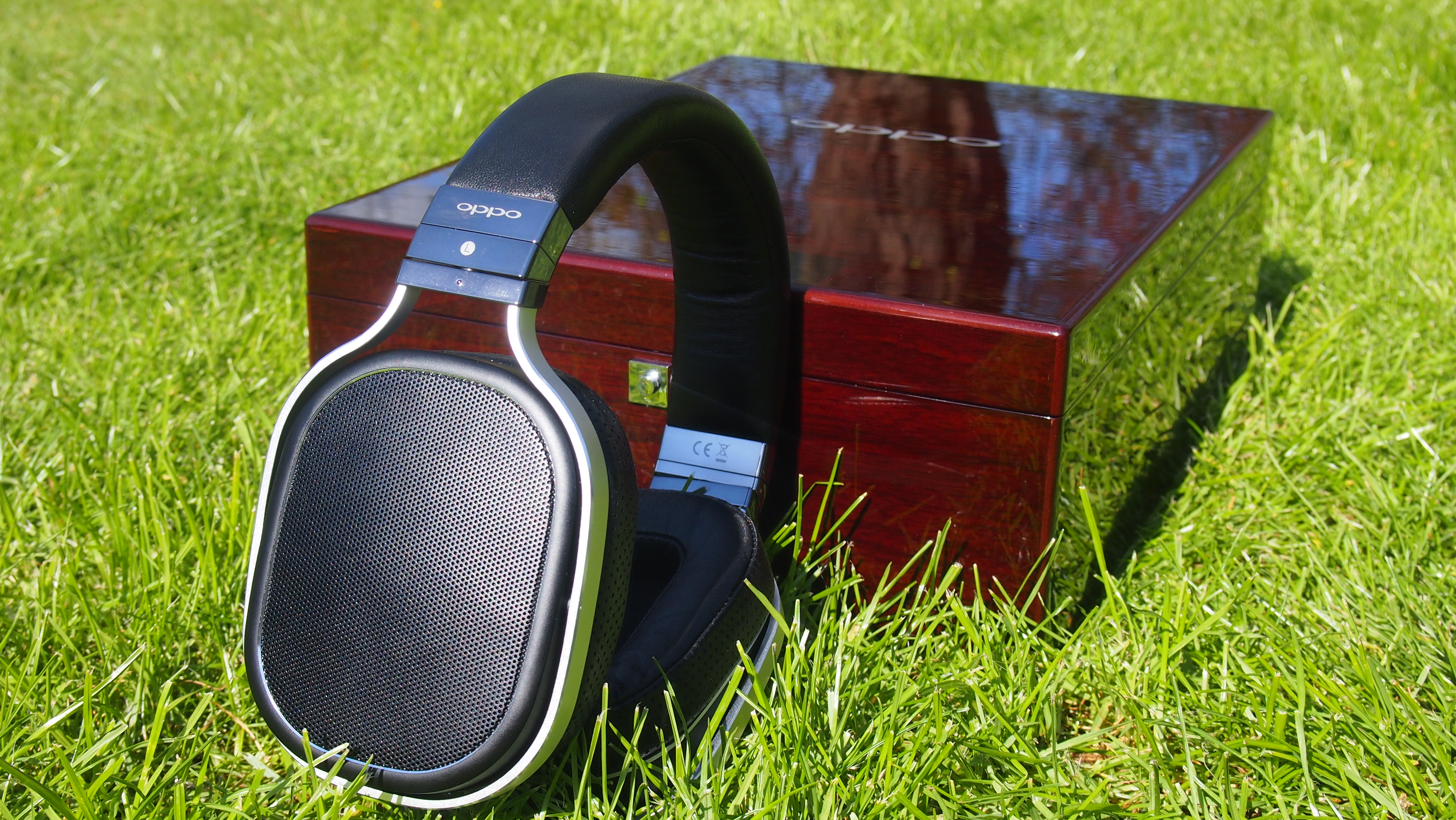
Sound quality
"It's a totally magical, crystal clear experience, like a staring into the bluest lagoon in a tropical dream you once had"
But of course, when you're wearing these things, you don't have to give a fig about how they work or the science behind them. After all, you've just spent your children's inheritance on the most expensive headphones in the observable universe and by the gods: all you want is for them to sound interstellar.
They do.
In fact, I've never listened to headphones that sound as clear, precise, clean and potent as these. Under the right conditions, the sound is nothing short of mesmerising. For £1,099, I would expect absolutely nothing less.
I'm a bit of a cliché when I test headphones - always heading straight for the Pink Floyd CDs. I've listened to some of these albums a hundred times, but never have I sat so enamoured for so long, absolutely captivated by every fibre and tone of every twinge of Waters' and Gilmour's guitars.
The Wall never sounded so good. The pops and zips and beats of Animals have never sounded so alive. Close your eyes, and those initial acoustic calling-card twangs on Wish You Were Here will convince you that Dave Gilmour is performing live in front of you.
It's the subtle tones that stand out the most, with even the softest strokes and beats coming through with the kind of sonic definition you normally only get from a live orchestra.
You can place instruments in the space around you, the sound coming through with significant presence, articulating cleanly without any hint of harshness even when cranked up to very high volumes. It became far too loud for my ears long before I detected any distortion - amazing.
It's a totally magical, crystal clear experience, like staring into the bluest lagoon in a tropical dream you once had.
The clarity is especially noticeable in the percussion. The soundwaves from a snare drum or a cymbal crash are punchy and so clean, so pure. Lesser headphones seem even more lifeless and blunt.
Switching between the PM-1's and other office-favourite headphones told the whole story. It's very easy to get used to mediocre sound (it's all relative, folks!) but the PM-1 puts you straight from the word go.
With many pairs of headphones, you can, with in your mind, separate out the midrange from the high and low ends. You can detect gaps in frequencies, along with areas that have, often not-so-subtly, been beefed up to mask a lack of definition.
But the Oppo PM-1 have no detectable weakness in this way. If there's anything there, it's beyond my ears. And their output is very very flat indeed. If you're a bass hunter, you probably won't like them, but they're not lacking in this area either.
Nope, these headphones are designed to take a music source and reproduce the sound with absolutely sonic perfection. And for me, they achieve it in glorious fashion.
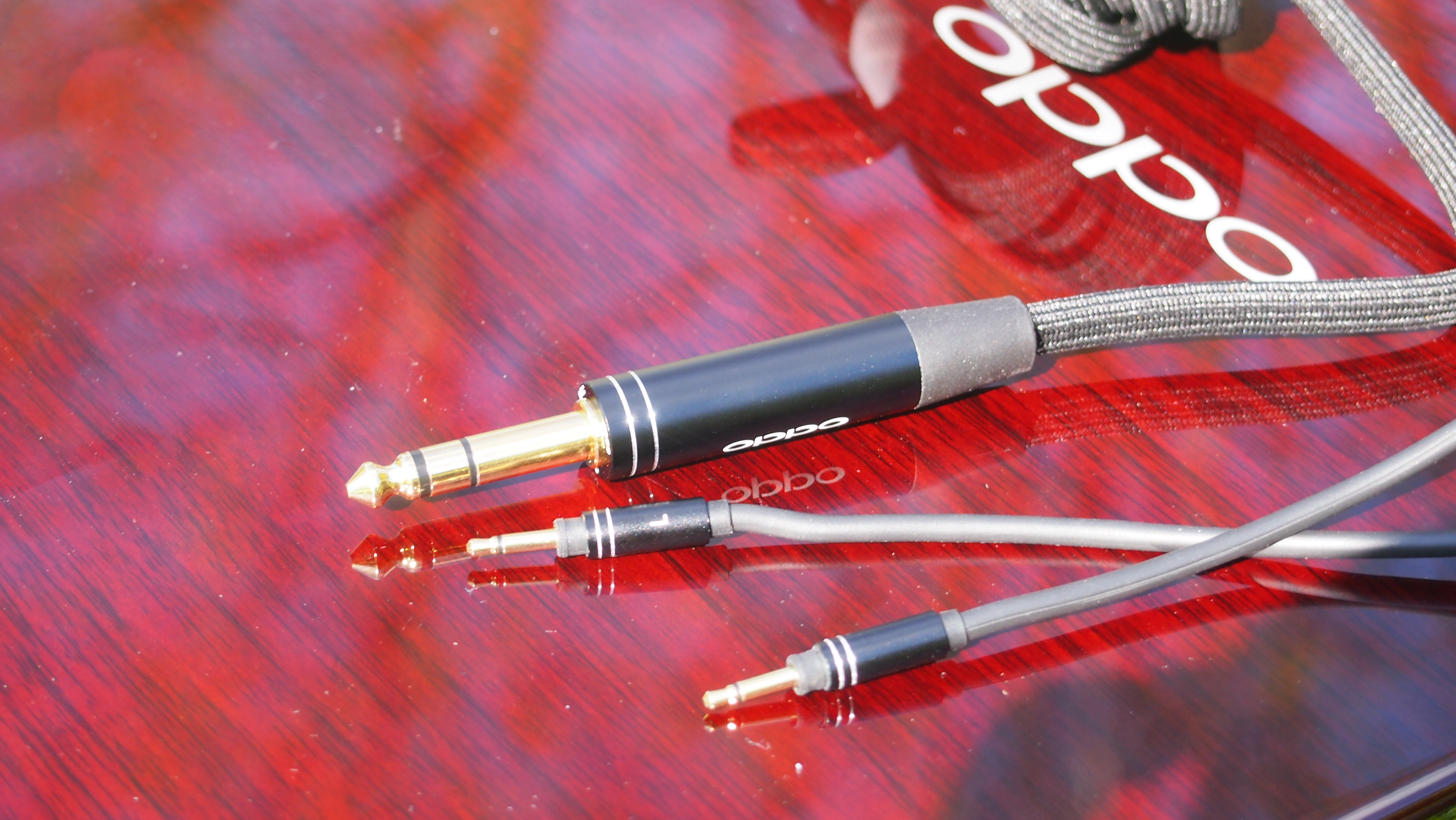
It's not all good news
The practicality of the Oppo PM-1 is far more questionable than the product's outright performance. Oppo says they're designed for all uses, specifically mentioning travel at the launch event I attended, but I must take issue with that.
The open back design means that they offer the purest sound reproduction but as a consequence also very little isolation, and that will definitely be an issue for a lot of potential customers.
Take a stroll outside with these things and the noise even from light traffic is significantly detrimental to their performance.
The noise gets in and muffles the precise frequencies generated by the planar magnetic drivers, neutralising the performance advantage they have over the alternatives. The same can be said for sitting on a train, a bus, a car or plane - only more so.
That being said, the sound leakage from the PM-1 isn't bad at all, so you can listen in an office without irritating everyone around you. It's far more likely to be you telling them to pipe down.
They stand head and shoulders above most other headphones, then, but only in the right environment. The right environment being your own home, drink at hand, bum nestled in your favourite chair, cat asleep in your lap (not purring, don't stroke him) with music pouring into your face from a high quality source. Bliss.

Audio sources
And that high quality source is more important here than ever with these headphones and those like them. I listen to a lot of lo-fi music - Grandaddy, Wolf Parade and Bright Eyes. But the Oppo PM-1 headphones do almost nothing for a lot of this music.
You also have to wonder whether, with half of the Western world now wandering around wearing ultra-bassy DJ-sponsored brands, how much popular music these days is being deliberately mixed especially for that flavour of low-end heavy soundscape. But that's a topic for another day.
What I would say though, is that as a full-time Spotify junkie, like many people, I listen to most music in the Vorbis q9 320kbps format, and actually I'd wager that the majority of people who use digital music services like this listen at default bitrates which are much lower. Some services and platforms don't even offer 320kbps.
While 320 is good enough for me most of the time for most types of music, it's still a compressed format and that means there's less detail in there for the PM-1 to make use of. It's not doing them justice, in other words.
If you're going to spend £1,099 on a pair of headphones like this, you really do need to be listening to lossless formats at least some of the time. Through a high end player. And a headphone amp. In a soundproofed, padded room. With the lights off. And you're going to need a beard.
That's not to say Spotify doesn't sound fantastic through these crazy things, but listening to lossless tracks through a headphone amp sounded detectably better. Of course it did, and Neil Young's PonoPlayer can't arrive soon enough.
In truth, the restrained nature of the Oppo PM-1's audio signature might frustrate if you're used to more punchy consumer products. I also found them mildly fatiguing after extended use, but this could be explained by the fact that I've had them permanently attached to my head ever since I got hold of them.
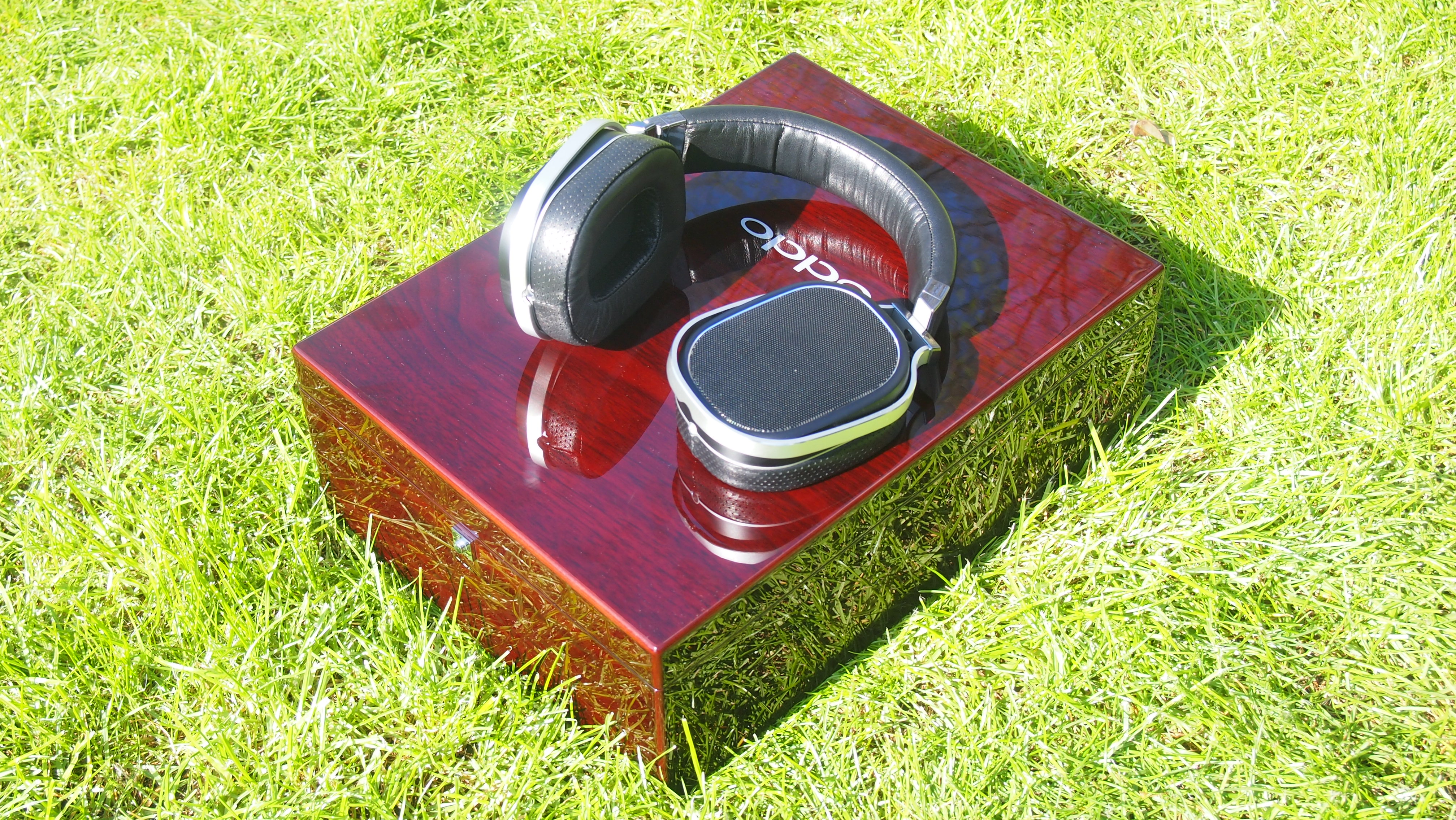
So, about that price
I can't really finish this review without discussing the price again because let's face it, it's an unignorably huge sum. These are reference-level cans and they're for people who're willing to pay anything to get the best. That pretty much rules out the vast majority of human beings on this planet.
It's more, even, than the ageing but still-wondrous Sennheiser HD 800, which you'll find online these days for around £800. Even they "only" cost £999 when they came out back in 2011.
But can you really put a price on perfect audio reproduction? It's also about personal preference, so if your ears really can appreciate the extra refinement that £1,099 can buy you, and reference audio is your thing, yes they could be worth the money.
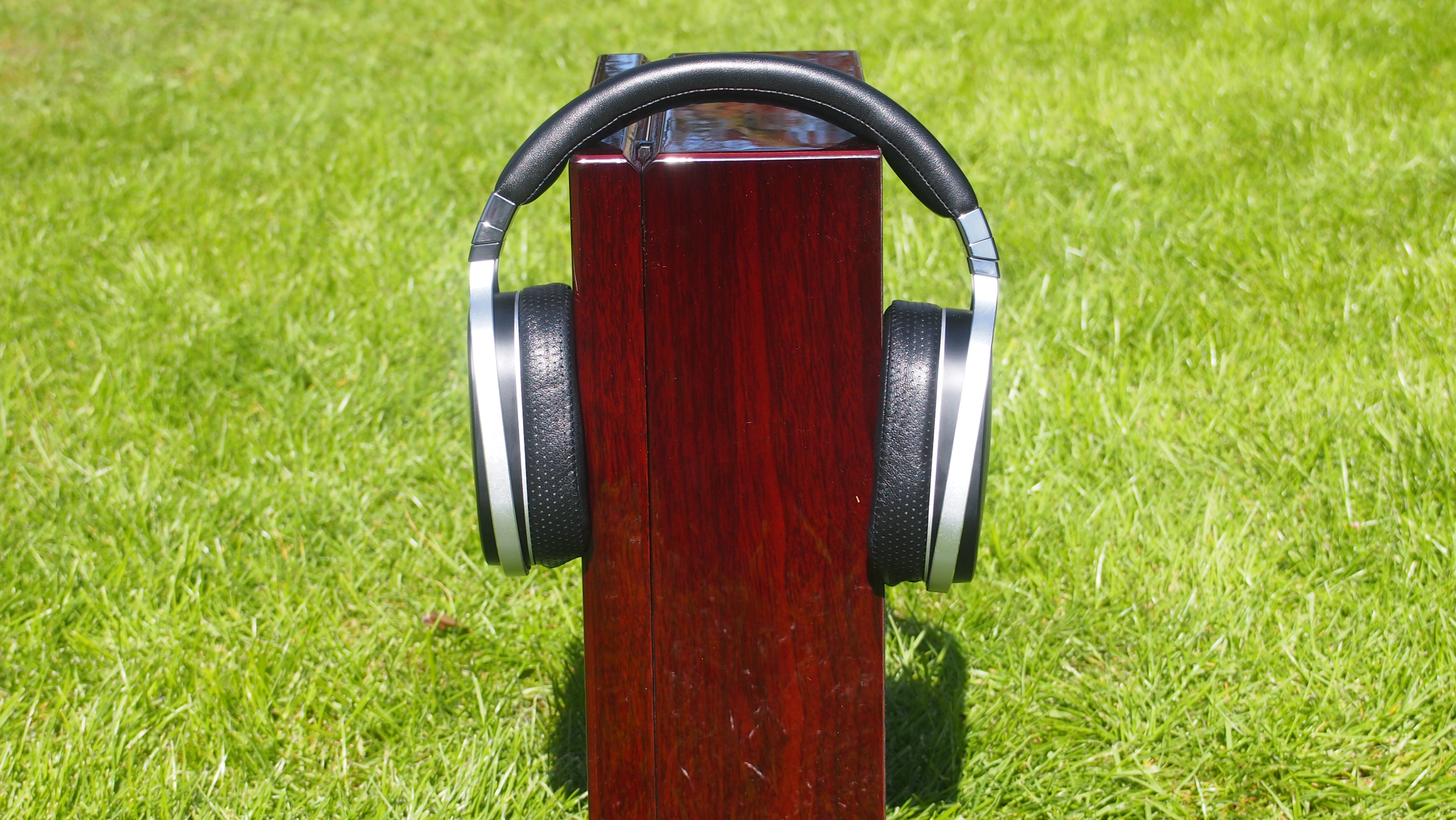
And did I mention they come in an absolute gigantic cardboard box, packaged up with a frankly ludicrous wooden display box like a pair of 18th Century duelling pistols? They do.
Verdict
The Oppo PM-1 headphones are brilliant, mesmerising and spellbinding. They're magical and captivating and wondrous and amazing. I love them.
High-end audio loving sound-wizards with cash to spend, you won't take my word for it and nor should you. Find a shop that sells them, give them a listen. Read more reviews, or better still, convince a friend to buy them so you can try them at home. I think you'll find they meet your listening requirements.
If you're an average punter, though, you should first consider that they are not ideal for travelling or listening in bustling environments. If you want to listen mainly on the train to work, buy some decent closed-back or noise cancelled cans instead - you'll save yourself a lot of cash.
Ultimately, for these to be worth buying you're going to need some stellar ears and a bank account to match. For everyone else, there's the B&W P7.

James was part of the TechRadar editorial team for eight years up until 2015 and now works in a senior position for TR's parent company Future. An experienced Content Director with a demonstrated history of working in the media production industry. Skilled in Search Engine Optimization (SEO), E-commerce Optimization, Journalism, Digital Marketing, and Social Media. James can do it all.
